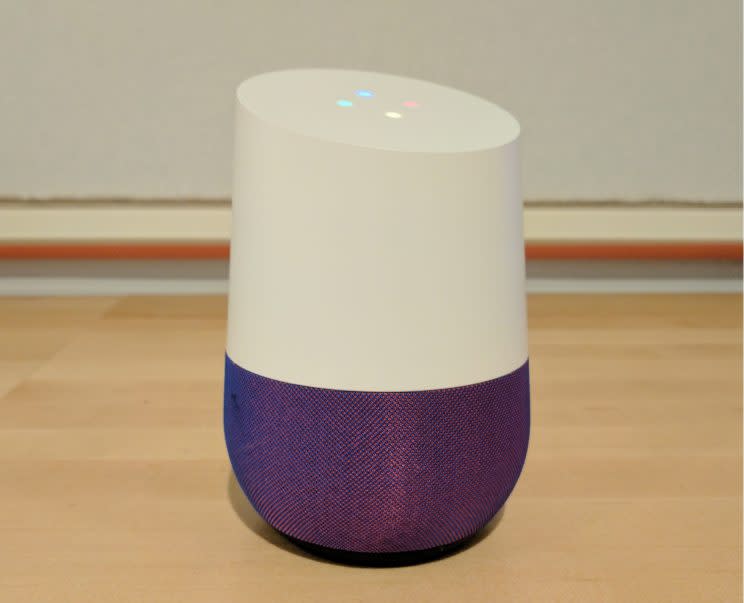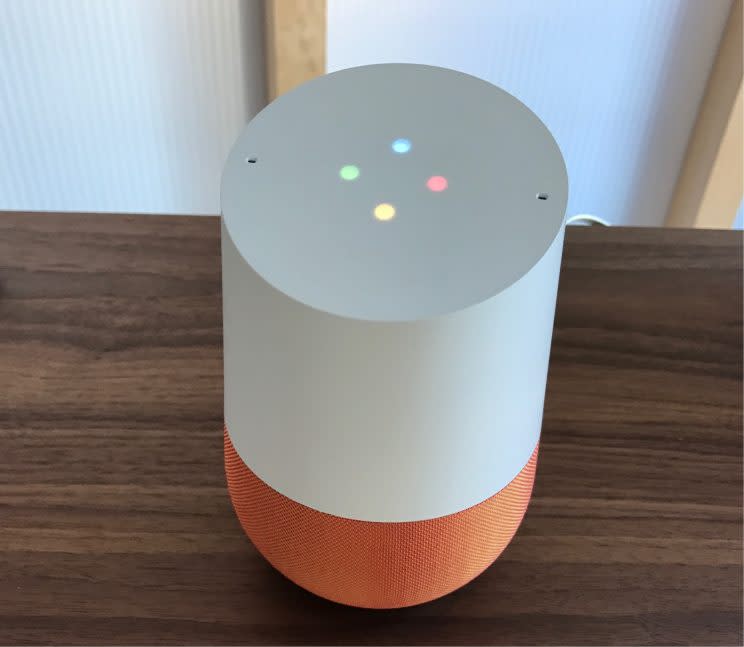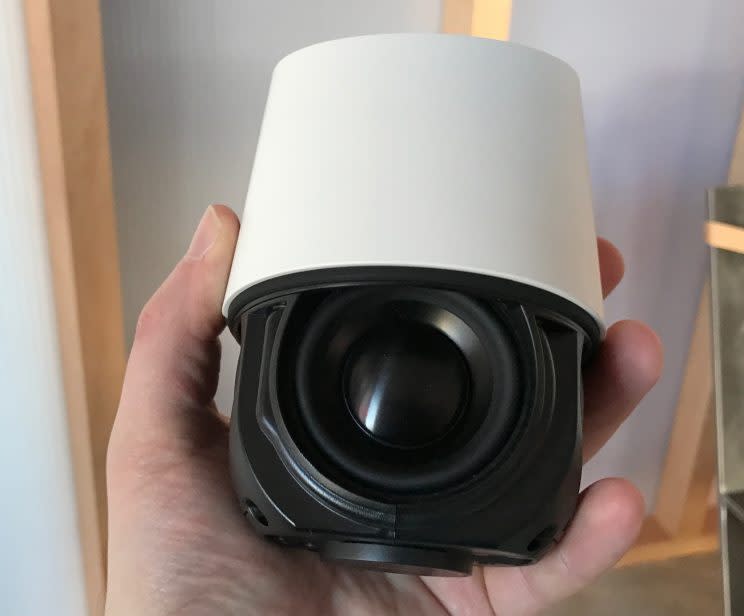Google Home review: A promising but unfinished smart home device
If you’re breathing, you use a Google product. Heck, between Google Search, Gmail, Google Photos or the company’s Android operating system, you’ve probably already used at least one of the tech giant’s services today.
And now Google (GOOG, GOOGL) wants to take over your house with its Google Home. A voice-activated speaker powered by the company’s new Google Assistant artificial intelligence platform, the $130 Google Home lets you control your smart home appliances, find out answers to your most nagging questions, check your daily schedule and find a good recipe for chicken cordon bleu using just your voice.
Google isn’t alone in its desire to automate your abode, though. Amazon’s Echo is already powering smart homes and helping people make bulk underwear purchases with their voice. In the end, Google’s offering is a bit, well, undercooked.
So should you bring Home home?
Home in your home
When Google first introduced Home at an event in October, The New York Times said the smart device looked “a little like an air freshener.” And, well … yeah that’s pretty spot-on. Home does look like a super-sized Glade freshener.
But that’s not necessarily a bad thing. Home, with its white top and gray fabric base, isn’t designed to be a statement piece that draws your attention. It’s supposed to naturally blend in with your home’s existing décor.

If you want to give your Home a bit of life, though, you can buy one of Google’s optional color bases made of either metal or fabric. I prefer the violet, fabric base Google sent along with my review unit. To change your Home’s base, you simply twist off the old one and twist on the new one. It’s about as easy as it gets.
Settling into your Home
Setting up Home is also incredibly easy. You download the Home app to your smartphone (either Android or iOS), plug in your Home, run through the setup on your phone and that’s it.
I did, however, run into a glitch while setting up my Home for the first time. The app ended up freezing for a few seconds, forcing me to go back a step before I could finish the setup. But after that, it was smooth sailing.

It’s important to make sure your Home and smartphone are on the same Wi-Fi network when setting up your device, though — or the two won’t be able to communicate with each other.
The Home app
Google’s new Home app takes the place of the company’s old Chromecast app, ensuring your in-home Google devices can be controlled from a single interface. There’s nothing particularly interesting about the app. You can still cast videos and music to your Chromecast or Chromecast Audio and see recommended movies and shows.
The big addition to the app is the ability to customize your default music service for Home — I picked Spotify — as well as the news services you’d like Home to use when you ask to listen to the news.
Okay, Google
So what exactly can Home do? Why not ask Home that question? Because thanks to the device’s Google Assistant AI and voice recognition, it can answer any number of questions by taking advantage of Google’s vast web search capabilities.
Ask why your cat bumps its head on your leg, and Home will tell you that your cat is showing affection. Got an upcoming flight? Ask Home when it leaves and you’ll quickly realize you should have left for the airport 10 minutes ago. Ask Home how far it is to Washington D.C. and you’ll get the distance in miles.
Want to know the latest headlines, weather or sports scores? Home’s got you covered.
To activate Home say, “Okay, Google,” and the green, blue, red and yellow lights on the device’s top will come to life. When Home is searching for an answer, the same lights will spin in a circle to let you know that it’s “thinking.”

At first blush it seems like Home can answer your every question. It almost feels like an omnipotent being from another dimension. But then the cracks begin to show.
Home can’t do things like provide directions, or send messages despite being connected to your Google account, and it can’t answer a slew of seemingly random questions. That said, Google says Home and Google Assistant will learn answers to questions as more people use the AI.
Amazon’s Echo can’t answer many of the same questions Home can, but the device does offer the ability to install specific skills via its Alexa app. Using skills you can do things like check your Yahoo Fantasy Football score, order Domino’s, and even turn on your car’s climate controls (if your car is a BMW, that is). Google Home offers no such capabilities.
Echo also lets you purchase products through your Amazon account with your voice. You can’t do that with Home.
Home control
Besides serving as your own personal know-it-all, Home features built-in smart home device controls. If, for example, you have a Chromecast or Chromecast Audio, you can tell Home to play the new “Logan” trailer on YouTube and your Chromecast will instantly begin streaming the trailer.
Want to listen to Iron Maiden on your living room stereo, tell Home to play “Number of the Beast” on your Chromecast Audio and Bruce Dickinson’s voice will come blasting out of your speakers. Don’t have a Chromecast Audio? Then you’re in luck, because Home’s speakers pack an impressive punch for such a small device.

If you have more than one Chromecast in your home, though, you’ll need to specify which Chromecast you want to play your video or song.
Unfortunately, Home can’t stream videos through services like Netflix just yet, though Google says it’s working on adding the feature in the near future.
In terms of smart home devices, Home works with products from just three manufacturers: Philips Hue, Samsung SmartThings and Nest, which is owned by Google’s parent company Alphabet. That’s a major disappointment considering that Amazon’s Echo works with a whole slew of devices from a litany of smart home companies.
Should you bring Home into your home?
For $130, Google’s Home won’t empty your wallet, but it’s also a good amount to pay for a device that feels unfinished. The ability to ask Google questions and (usually) get your answers in the blink of an eye is incredible. The problem is that, unlike the Echo, Home doesn’t work with nearly as many smart home devices or apps. On top of that, you can’t make online purchases with Home.
So is Home for you? Well, if you’re a huge Google fan and have a Chromecast and Chromecast Audio, Home might be worth the cost. For everyone else, I’d suggest either picking up an Echo or waiting until Google can increase Home’s overall capabilities to match those of Amazon’s smart home device. Fortunately, Google is already working on this, so hopefully Home is up to speed with the Echo in short order.
More from Dan:
Email Daniel at dhowley@yahoo-inc.com; follow him on Twitter at @DanielHowley.


